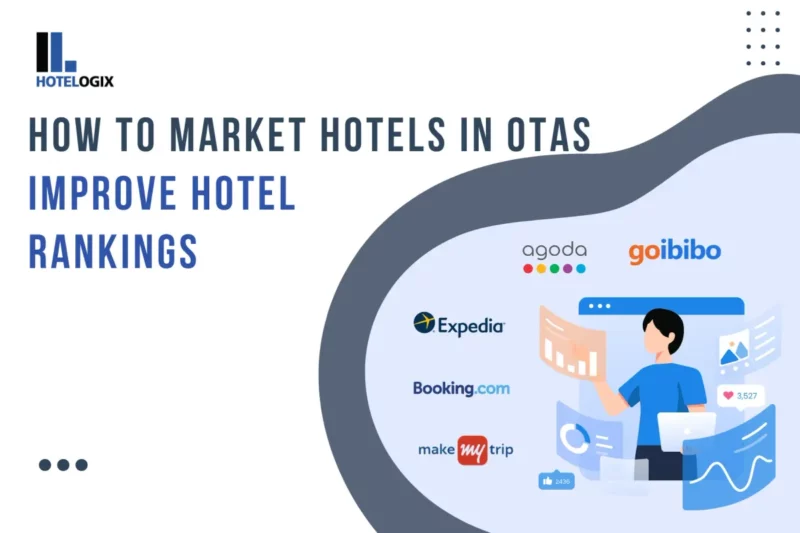Such reliance on jargon isn’t unique to the hospitality industry but that’s no help to someone who wants to understand the basics of hotel revenue management without asking what might feel like naïve questions like ‘erm, what’s a STAR report?’
While you probably have a better idea now of the context of STAR reports and can navigate conversations involving them, deeper questions might remain in your mind.
Don’t worry, we’re here to answer them for you. This guide breaks down everything hoteliers need to know about STAR reports – from what they include to how to use them for smarter revenue management.
What is a STAR report in the hospitality industry?
The Smith Travel Accommodations Report – commonly known as the STAR report – is a benchmarking tool used widely across the hotel industry to measure a property’s performance against its competitive set and broader market.
Published by STR, STAR reports are used in the hotel industry for data-driven decision-making in hospitality revenue and distribution management.
Originally known as Smith Travel Research, STR was founded in 1985 and has since become well known for its historical hospitality data, analysis and benchmarking.
In 2008, it expanded internationally as STR Global, and today it operates under the parent company CoStar Group, delivering insights to hotels in over 180 countries. STR is widely recognized for its long history of hospitality benchmarking. Its reports are built from aggregated, anonymized data shared by thousands of hotels. STR ensures your property’s data is never individually identifiable—only averages across a competitive set are shown, preserving confidentiality while allowing for reliable benchmarking.
While the terms ‘STR report’ and ‘STAR report’ are sometimes used interchangeably, it’s helpful to know that ‘STAR’ specifically refers to the performance benchmarking report produced by STR. So, in this context, when a hotelier says they’re looking at their STR data or STAR report, they’re usually talking about the same thing – the detailed report that compares a hotel’s performance to its competitive set and market averages.
At its core, the STAR report provides key performance indicators (KPIs) like hotel occupancy, average daily rate (ADR) and revenue per available room (RevPAR), as well as index scores that show how a property is performing relative to others in the market. While widely used,
STAR reports are typically delivered by mail on a weekly, monthly, or daily basis, depending on your subscription. Used consistently, they can become a foundational part of your performance monitoring toolkit.
Why do hotels care about STR reports?
But receiving the report is only half the story. Hotels care about STR reports because they provide essential context, revealing how your hotel compares to a hand-selected competitive – a group of similar hotels in their market – as well as to the wider local or regional market.
In fact, STR’s benchmarking data – particularly the Revenue Generation Index (RGI) – is often used as a performance benchmark for hotel chains and can even play a role in hotel financing. Many ownership groups set RGI-based targets for individual properties, and lenders may consider STR performance when evaluating hotel mortgages or investment potential.
This level of benchmarking allows hotel teams to quickly identify whether their performance is leading, lagging or aligned with the market. For example, an uptick in revenue might look positive at first glance, but if competitors are seeing stronger growth, the STAR report reveals an opportunity to reassess pricing, distribution or marketing strategies.
Hotels typically use STAR reports during monthly and weekly performance reviews, during budgeting and forecasting, and when reporting to asset managers or owners. The reports are also valuable when evaluating the impact of events, promotions or renovations, or when planning a new development or brand repositioning. In short, any time a hotel wants to put its performance into broader context, a STAR report is a helpful reference.
One of the reasons hotels place so much trust in STR reports is the consistent industry-wide participation that underpins them. The data is sourced from a vast network of properties, ensuring robust, real-world benchmarks that reflect actual market conditions, helping you avoid some of the mistakes it’s easy to make.
Since data is aggregated across the comp set, you get a trustworthy benchmark without exposing individual hotel performance, giving hotels confidence in the accuracy and discretion of the insights.
In an industry where competitive dynamics shift constantly, STAR reports help hotels stay focused, agile and aligned with market realities – making them a key part of any savvy revenue strategy.
How can you get a STAR report for your hotel?
Getting a STAR report for your hotel is a straightforward process – but it does involve a few key steps to ensure the data is both accurate and meaningful.
The first step is enrolling your hotel in STR’s data-sharing program – the whole system is based on a quid pro quo. This means agreeing to submit your performance data – typically occupancy rate, ADR and total room revenue – on a regular basis. (Don’t worry; your hotel’s data can’t be identified individually by anyone else.)
In exchange, STR provides you with benchmarking reports that compare your performance against a comp set of your choosing. This comp set usually includes hotels with similar characteristics in terms of location, size, class and amenities.
If you’re looking for insights into a specific market rather than clusters of hotels, you can request market trend reports instead of or in addition to a STAR report. These provide aggregated data across entire cities, regions or segments.
As for cost, STR pricing is typically based on the type of report, the reporting frequency (daily, weekly, monthly) and the level of detail you require.
For most hotels, a basic monthly STAR report comes at a modest subscription fee. More detailed or high-frequency reports (like daily data) may come at a higher cost. If you’re part of a hotel chain, access may already be included in your corporate reporting tools.
Ultimately, if used well, the investment in STR reporting should more than pay for itself through the clarity and strategic insights it provides, helping you compete smarter in your market.
What’s included in a STAR report?
As we’ve established, a STAR report provides a snapshot of how a hotel is performing relative to its competitive set and market, focusing on a handful of KPIs that are foundational to revenue management. These metrics not only track your property’s performance but also help uncover opportunities and threats in your market positioning.
Here’s a breakdown of the core KPIs included in a STAR report:
- Occupancy (%): The percentage of available rooms that were sold during a given period. This reveals how well a hotel is capturing demand.
- Average daily rate (ADR): The average room revenue earned per sold room. ADR helps you assess pricing strategy and rate competitiveness.
- Revenue per available room (RevPAR): Calculated by multiplying occupancy by ADR, your hotel’s RevPAR is a key measure of overall revenue performance and efficiency.
- Index scores: Each KPI is accompanied by an index, which shows how your hotel performed compared to your comp set (an ADR index of 110, for example, means your hotel outperformed the comp set by 10%).
- Percentage change: Reports include year-over-year and period-over-period comparisons to track performance trends over time.
- Segmentation and day-of-week data: Depending on the level of detail you subscribe to, STAR reports may also break down metrics by business/leisure segments or weekdays vs weekends.
Together, these data points give you a clear view of how you’re performing and where you might improve. Whether you’re tweaking pricing, evaluating promotions or refining your forecast, the STAR report keeps your strategies grounded in real market data.
While STAR reports offer a solid retrospective view based on historical performance data, STR also offers Forward STAR – a separate report that provides visibility into future occupancy trends using on-the-books reservations. This helps you compare your forward pacing against the market.
For even more immediate and actionable benchmarking, many hoteliers now use tools like Benchmark Insight by Lighthouse. It combines historical and forward-looking metrics – including occupancy, ADR, and RevPAR – with real-time updates pulled directly from your PMS, so you can react faster and make informed decisions with up-to-date market context.
How do you read a STAR report?
While reading a STAR report can seem daunting at first, once you understand the layout and terminology, it becomes a highly actionable tool. The report is typically divided into sections based on time periods (daily, weekly, monthly), segments (transient, group, total) and comparisons (your hotel vs comp set vs market).
In each section, you’ll find familiar KPIs like those we flag above, alongside three key terms. These are also covered in the previous section but, with our reading hats on, let’s take a closer look, as they’re designed to help put your performance in context:
- Index: This shows how your hotel performed relative to your comp set. An index of 100 means you’re on par. Above 100 = outperformance; below 100 = underperformance.
- Rank: This tells you how you rank within your comp set for each KPI. For example, ‘3 of 7’ means you’re third out of seven hotels. This is helpful for quickly spotting performance gaps.
- Percentage change: With this metric, you can track growth or decline over time. For example, a +5% change in occupancy shows improvement compared to the same period last year.
To get the most value from a STAR report, you should look beyond individual numbers to identify patterns. Are you consistently outperforming on occupancy but lagging in ADR, for example? Such a realization could point to a need for pricing adjustments. Or are you ranked low in RevPAR despite decent occupancy? If so, consider optimizing your strategy for room rates or mix of business.
You can also use the report to measure the impact of your hotel marketing campaigns, special events or renovations. It’s especially useful for spotting early signs of market shifts, allowing you to adjust strategies before your competitors do.
Ultimately, a STAR report isn’t just a scorecard; it’s a diagnostic tool. When reviewed regularly and interpreted in context, it can guide you in making smarter decisions and help you achieve a more competitive market position.
Don’t rely solely on STR to measure your hotel’s success
While STAR reports are a valuable benchmarking tool, they do have limitations. The accuracy and relevance of the data depend heavily on the quality of your comp set – and an unbalanced or outdated group can easily skew your insights.
Because STAR reports only show group averages, you won’t get a view into how individual competitors are performing. That makes it harder to pinpoint exactly who’s gaining share or changing strategy (though it’s good news in terms of your own commercially sensitive info!).
Additionally, STAR reports focus solely on rooms revenue metrics, leaving out other important revenue streams like food and beverage or ancillary services. They also don’t account for qualitative factors such as guest experience or brand perception.
Lastly, remember to factor in reporting lags – even daily data is retrospective. So it’s not a real-time decision-making tool. To get the full picture, STAR reports should be combined with internal data, forward-looking tools and broader market intelligence.
Which brings us to the various solutions that Lighthouse offers to guide you in monitoring and making sense of your own performance metrics.
There are plenty to choose from but we’d draw your attention to Benchmark Insight. Built for modern revenue teams, Benchmark Insight provides a real-time view of your performance against the market, with daily updates pulled directly from your PMS. It tracks occupancy, ADR, RevPAR, pickup and pace, and more – across both historical and future-looking data – so you can respond to market shifts as they happen.
It also includes Smart Compset, an AI-powered, dynamic competitor set that reflects actual consumer buying behavior – not just static hotel attributes. You control the comparison criteria, update it in real time, and benchmark your hotel against the properties that actually matter.
With Benchmark Insight, you can:
- Spot competitive trends early by analyzing historical and forward-looking data across your comp set
- Benchmark occupancy, ADR, RevPAR, pickup and pace – all in one place, updated daily
- Adapt faster to market shifts using real-time insights pulled directly from your PMS
- Customize your compset with Smart Compset, an AI-powered tool that reflects actual consumer booking behavior
- Compare performance more accurately by focusing on the properties that truly compete with yours and adapt strategies accordingly
- Save time with a seamless, user-friendly dashboard integrated into the Lighthouse platform
With daily updates and a clear view of the market, drawn from the most diverse and trusted data set in the hospitality industry, Benchmark Insight gives you instant clarity on your competitive position – and where to focus next.
About Lighthouse
Lighthouse is the leading commercial platform for the travel & hospitality industry.
We transform complexity into confidence by providing actionable market insights, business intelligence, and pricing tools that maximize revenue growth.
We continually innovate to deliver the best platform for hospitality professionals to price more effectively, measure performance more efficiently, and understand the market in new ways.
Trusted by over 70,000 hotels in 185 countries, Lighthouse is the only solution that provides real-time hotel and short-term rental data in a single platform. We strive to deliver the best possible experience with unmatched customer service. We consider our clients as true partners—their success is our success.
For more information about Lighthouse, please visit: https://www.mylighthouse.com.










